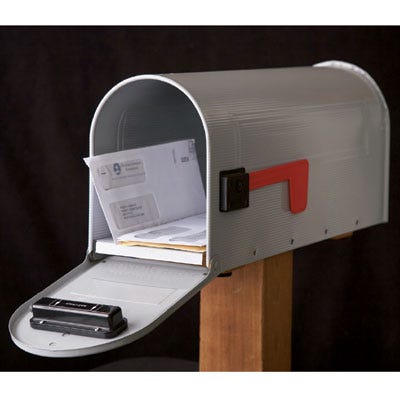
Show All Items
This instructable will show you how to make a web-connected mailbox sensor. Besides emailing you when your mailbox is opened, it will also signal home mailbox sensor a Raspberry Pi sitting in your house to play an audio announcement. There is also a web-accessible Android/iPhone interface for you to check what time mail was delivered, as well as display the battery voltage left on the sensor.
But this could also easily be used as mail box sensor a web-connected security system, one that both plays an audio alarm in your home and emails you when the someone breaks into your house.
Under normal use (a few door http://mailboxsensor.com openings per day), the battery powered mailbox Arduino should last over a year on a set of 4xAA batteries. The transceiver has a range of over 700 feet through multiple walls, so this should work for most situations.
General Components:
One strip board Arduino, circuit optimized for low battery power consumption
Strip board components (voltage regulator, capacitor, resistors, etc…), see details later on.
Two wireless transceivers (RFM69HW)
Two Arduino Uno’s with selectable 3.3V/5V switch for the gateways
One Raspberry Pi, but could be replaced with your PC/Mac if you don’t mind running the computer 24/7
I’ll explain how to piece all these parts together and provide all the code needed.
Step 1: Better Video Explanation Of How It Works
Show All Items
Take a look at this longer video to understand how the pieces of this system talk to each other. Then, we’ll start the first step of making the Mailbox Arduino.
Step 2: Make Mailbox Arduino
Mailbox Sensor Email and Alarms
Show All Items
Obtain the following parts for the Mailbox Arduino:
A blank ATMEGA328P-PU
HopeRF’s RFM69HW
Two position screw terminal for connecting the battery to the strip board
Battery voltage divider: two 1MOhm resistors, 0.1uF ceramic capacitor
Voltage regulator circuit: two 0.1uF ceramic capacitors (one for input, one for output), one 10uF tantalum capacitor(for output)
Oscillator: one 8MHz oscillator, two 22pF capacitors
Indicator LED: one LED, one 220 ohm resistor for current limiting
One 10k ohm pull up resistor for reset line
Reed switch and one 10k ohm pull down resistor
A strip board about 3×6 inch
24 pin socket to mount the ATMEGA328 on
4xAA battery box, or 3xAA if your mailbox is really narrow.
Follow the circuit diagram above and solder up the components. You may want to assemble a breadboard prototype to test it out before committing to a soldered strip board, depending on your comfort level. Note that there are two locations where you need to strip the copper off the strip board. Under the LED, and under the reed switch.




